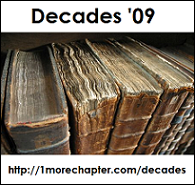I just finished reading
The Fountainhead by Ayn Rand. I received this book as a Christmas gift from my mom. She has a weird habit of giving me philosophy-related, classic novels as gifts. Last year, she gave me
The Golden Notebook by Doris Lessing. I was curious to read this book -- I've heard so many negative things about Rand, like that her novels are just a vehicle for her to espouse Objectivism, the philosophical system that she developed.
The Fountainhead was published in 1943, which is before Rand officially established Objectivism. I haven't done much research into Rand's philosophy, so I'm going to refrain from commenting on it and just focus on the novel.
The Fountainhead is basically a study of the interactions between several characters who are archetypes of different ideals. It primarily follows the career of Howard Roark, an architect with a unique style who refuses to compromise with what the general public wants or expects. Because of this, he is admired by some and persecuted by others. The book also follows the career of Peter Keating, another architect coming up at the same time as Roark who gives the public exactly what they want and expect. Ellsworth Toohey, an architectural critic who champions the voice of the public, tries to influence and control both Roark's and Keating's careers. Gail Wynand is the owner of the newspaper that Toohey writes for who panders to what the public wants for the money, while he considers himself to be above that. Dominique Francon is a woman who falls in love with Roark and tries to destroy his career at every chance, to see if he will persevere.
I really expected to hate this book, but I ended up liking it fairly well. I thought the characterizations were really strong although unrealistic. The message of this book to me is that the majority of society is really dumb and will like and want whatever they're told to like and want. I hate to say it because it's really mean, but I generally tend to agree with that viewpoint. The character that I liked the most and was the most appalled by was Ellsworth Toohey, who recognizes this fact and tries to use it to control society. This book is really long (727 pages). I don't think it needed to be that long, but the story sucked me in more than I expected it to. I expected this book to take me about a month to get through, but it only took about two weeks. I didn't find it to be too heavy on philosophy, although others might disagree. I will probably end up reading more by Rand, but I'm not in any rush to do so.









